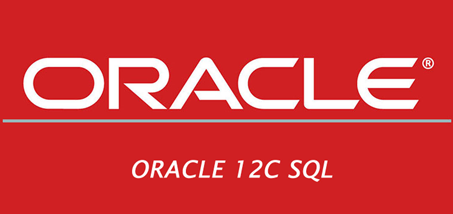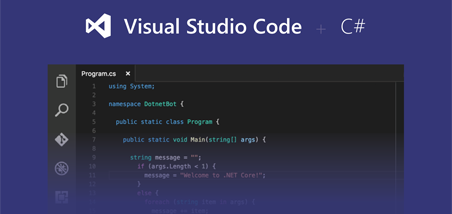Introduction to Oracle SQL
Oracle EğitimleriBu eğitim, ilişkisel
veritabanları ve SQL programlama dilinin temel kavramlarını ele alır.
Katılımcılar bu eğitimde, tekli ve çoklu tablolarda sorguları yazma,
tablolardaki verileri işleme ve veritabanı nesneleri oluşturma becerilerini
edinmektedirler.
Bu
eğitimde neler öğreneceksiniz?
• Kodların
geliştiriciler tarafından iyileştirilmesini sağlayan temel ilişkisel veritabanı
kavramları
• Kısıtlanmış ve sınıflandırılmış
verilerle rapor oluşturma.
• Veri işleme
ifadelerini (DML) çalıştırma
• Belirli nesnelere
veritabanı erişimini kontrol etme
• Düzen nesnelerini yönetme
• Veri sözlüğü
görünümleriyle
nesneleri yönetme
• Tablolardan satır ve
sütün verilerini alma
• İzinleri nesne ve
sistem seviyesinde kontrol etme
• Dizinler ve
kısıtlamalar oluşturma, mevcut düzen nesnelerini değiştirme
• Harici tabloları oluşturma
ve sorgulama.
Eğitim İçeriği
Introduction
•
Overview
•
Aims and Objectives
•
Sample Data
•
Schedule
•
Introductions
•
Pre-requisites
•
Responsibilities
Relational Databases
•
The Database
•
The Relational
Database
•
Tables
•
Rows and Columns
•
Sample Database
•
Selecting Rows
•
Supplier Table
•
Saleord Table
•
Primary Key Index
•
Secondary Indexes
•
Relationships
• Analogy
•
Foreign Key
•
Foreign Key
•
Joining Tables
•
Referential Integrity
•
Types of Relationship
•
Many to Many
Relationship
•
Resolving a
Many-to-Many Relationship
•
One to One Relationship
•
Completing the Design
•
Resolving
Relationships
•
Microsoft Access – Relationships
•
Entity Relationship
Diagram
•
Data Modelling
•
CASE Tools
•
Sample Diagram
•
The RDBMS
•
Advantages of an
RDBMS
•
Structured Query
Language
• DDL – Data Definition Language
•
DML – Data Manipulation Language
•
DCL – Data Control Language
•
Why Use SQL?
•
Course Tables Handout
Data Retrieval
•
SQL Developer
•
SQL Developer – Connection
•
Viewing Table
Information
•
Using SQL, Where
Clause
•
Using Comments
•
Character Data
•
Users and Schemas
•
AND and OR Clause
•
Using Brackets
•
Date Fields
•
Using Dates
•
Formatting Dates
•
Date Formats
•
TO_DATE
• TRUNC
•
Date Display
•
Order By Clause
•
DUAL Table
•
Concatenation
•
Selecting Text
•
IN Operator
•
BETWEEN Operator
•
LIKE Operator
•
Common Errors
•
UPPER Function
•
Single Quotes
•
Finding Metacharacters
•
Regular Expressions
•
REGEXP_LIKE Operator
•
Null Values
•
IS NULL Operator
•
NVL
•
Accepting User Input
Using Functions
•
TO_CHAR
•
TO_NUMBER
•
LPAD
•
RPAD
•
NVL
•
NVL2 Function
•
DISTINCT Option
•
SUBSTR
•
INSTR
•
Date Functions
•
Aggregate Functions
•
COUNT
•
Group By Clause
•
Rollup and Cube
Modifiers
•
Having Clause
•
Grouping By Functions
•
DECODE
• CASE
•
Workshop
Sub-Query & Union
•
Single Row
Sub-queries
•
Union
•
Union – All
•
Intersect and Minus
•
Multiple Row
Sub-queries
•
Union – Checking Data
•
Outer Join
•
More On Joins
•
Joins
•
Cross Join or Cartesian
Product
•
Inner Join
•
Implicit Join Notation
•
Explicit Join Notation
•
Natural Join
•
Equi-Join
•
Cross Join
•
Outer Joins
•
Left Outer Join
•
Right Outer Join
•
Full Outer Join
•
Using UNION
•
Join Algorithms
•
Nested Loop
•
Merge Join
•
Hash Join
•
Reflexive or Self
Join
•
Single Table Join
•
Workshop
Advanced Queries
•
ROWNUM and ROWID
•
Top N Analysis
•
Inline View
•
Exists and Not Exists
•
Correlated
Sub-queries
•
Correlated
Sub-queries with Functions
•
Correlated Update
•
Snapshot Recovery
•
Flashback Recovery
•
All
•
Any and Some
Operators
• Insert ALL
• Merge
Sample Data
•
ORDER Tables
•
FILM Tables
•
EMPLOYEE Tables
•
The ORDER Tables
•
The FILM Tables
Utilities
•
What is a Utility?
•
Export Utility
•
Using Parameters
•
Using a Parameter
file
•
Import Utility
•
Using Parameters
•
Using a Parameter
file
•
Unloading Data
•
Batch Runs
•
SQL*Loader Utility
•
Running the Utility
•
Appending Data
Control user access
•
User Management
•
System permissions
and object
•
Granting
•
Receiving permission
•
Roles
•
Using the links
Managing schema objects
•
ALTER TABLE command
•
Adding, modifying,
and deleting columns
•
Add, remove, turn off
constraintów
•
Create indexes
•
Flashback operations
•
External tables
Operations on large data sets
•
MERGE command
• DML operations of
podzapytaniami
•
DML operations with
RETURNING clause
•
INSERT command multi
tables
Conditional expressions
•
CASE expression
•
DECODE expression
•
Generate reports by
grouping related data
•
The GROUP BY clause
•
The HAVING clause
•
Aggregating data – ROLLUP and CUBE operators
•
Identification
summaries –
GROUPING function
•
Aggregating data – GROUPING SETS operator
Managing data in different time zones
•
Time zones
•
Variations TIMESTAMP
•
Differences between
DATE and TIMESTAMP
•
Conversion operations
Advanced subqueries
•
Subqueries
•
Multi-column
subqueries
•
The subquery in the
FROM clause
•
Correlated subqueries
•
WITH clause – re-use query blocks
Join tables
•
Inequality in the
WHERE clause and the FROM clause
• Semijoin
• Antijoin
The processing of hierarchical data
•
The tree structure
•
hierarchical
Queries
•
Pseudo column
•
Sort data in a
hierarchical query
•
Useful functions
Regular expressions
•
Simple and complex
patterns
Ön Koşullar
Herhangi bir ön koşul yoktur.






